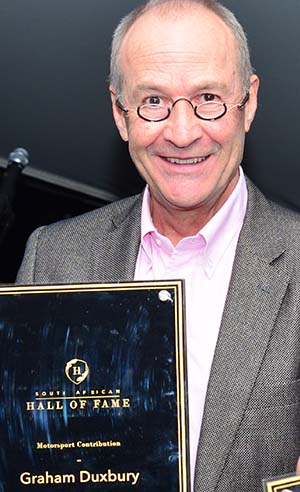The McLaren MP4/4 is, statistically, the most successful Formula One car in history, having won 15 out of 16 races and claiming all but one pole position in the 1988 season in the hands of two of the world’s greatest drivers – Ayrton Senna and Alain Prost.
 By Graham Duxbury
By Graham Duxbury
However, the debate has raged ever since that glorious ’88 season as to who actually designed the MP4/4 or, more accurately, the McLaren-Honda MP4/4 which famously gave Senna his first World Drivers’ Championship title.
While the McLaren MP4/4 won on debut at the 1988 Brazilian Grand Prix, it was at the second race at Imola where the team’s dominance was underlined.
It was noted in a media report that the McLaren MP4/4 “made a mockery of the rest of the grid” as both Senna and Prost were three seconds faster than the opposition. In the race, they produced a McLaren 1-2 finish having lapped the rest of the field at least once.
The only race that the MP4/4 did not win in 1988 was the Italian GP in which Gerhard Berger’s Ferrari triumphed after Senna, who was leading, tangled with the Williams of Jean-Louis Schlesser while attempting to lap him. Prost had retired with engine problems. The only time in 1988 that a Honda engine had let him down.
Ever since that eventful 1988 season in which the McLaren MP4/4 swept all before it, easily securing driver’s and constructor’s titles, the row between then-McLaren chief engineer Gordon Murray and chief designer Steve Nichols has rumbled on as to who actually led the McLaren MP4/4 17-strong design team.
And although one may expect them to agree that the design of a race car is always a team effort, neither one has ever acknowledged the contribution of the other.
In countless media interviews, both Nichols and Murray have gone to great pains to eschew the involvement of the other in the conception, birth and execution of the incredibly successful MP4/4 project.
Nichols, for example, says the MP4/4 was an update or evolution of his earlier design – the McLaren TAG-Porsche MP4/3. “With the MP4/4 we did things we would have liked to have done on the previous car if we’d had more time,” he says. The MP4/4 was simply his MP4/3 design adapted to accept the Honda engine and the smaller fuel tank mandated for 1988, he claims.
“We were very happy with the aerodynamics we’d achieved with the MP4/3, so the MP4/4 sidepods were grafted straight from those,” he adds.
Murray, on the other hand, disagrees. He says he deserves full credit for designing the MP4/4, which is solely based on the design of the “tilted-engine” Brabham BT55 which he had previously penned. He refutes the notion that any credit might be given to Nichols.
Author James Elson, writing in Motor Sport Magazine quotes Murray: “The MP4/4 was not designed by Steve Nichols, I can promise you that. I put him in charge of the monocoque and the front end while Dave North and I did the rear end, the aerodynamics, and a radical new dry-sump three-shaft gearbox working with Pete Weismann. It was a pretty radical motor car.”
Murray adds: “I’m sick and tired of people living off my reputation. This thing about Steve Nichols being chief designer [of the MP4/4] is the biggest load of rubbish you’ve ever heard.”
Nichols is unequivocal, claiming the MP4/4’s design philosophy is closely linked to that of the MP4/3. “It is exactly the same – to find the best combination of low centre of gravity, low polar moment, low drag and high downforce,” he stresses.
On his website, Nichols emphasises his role as the only MP4/4 designer: “To overcome any confusion, Gordon sent around a memo, in which he said that I had total design responsibility for the MP4/4 and that Neil Oatley would be looking at the car [to follow] after that, the MP4/5, a naturally aspirated car, requiring a longer gestation period.”
As Elson suggests: “There appears to be more to the argument than simply opposing viewpoints or confusion, with personal differences perhaps playing a part between the two.” Or, as one commentator has asked, is this a case of two grown men behaving like teenagers?
